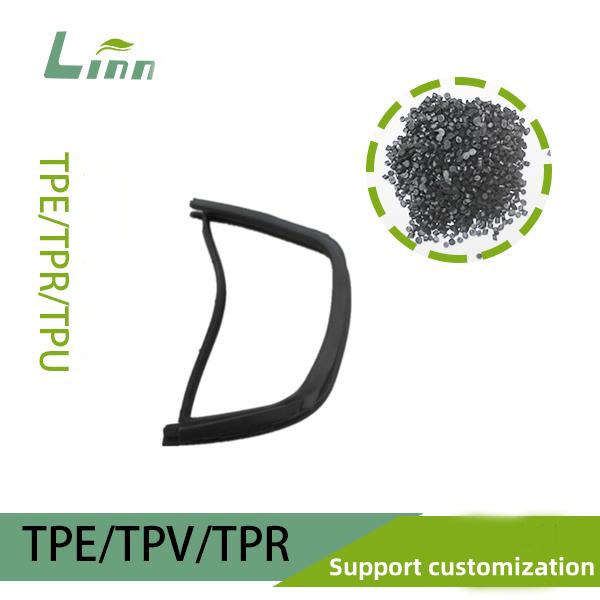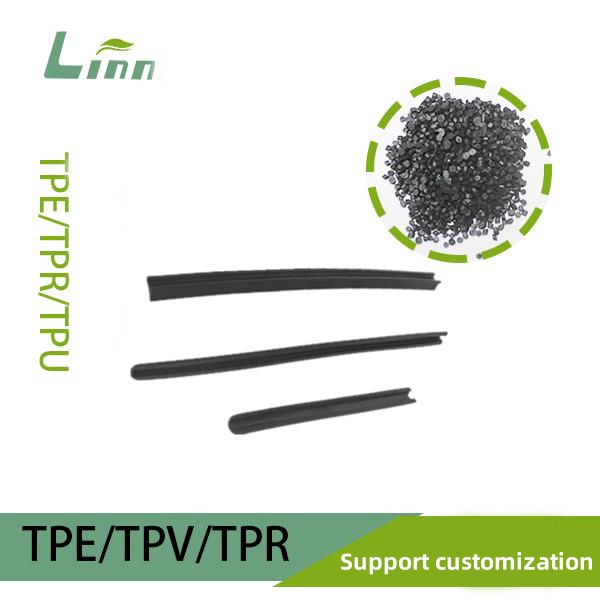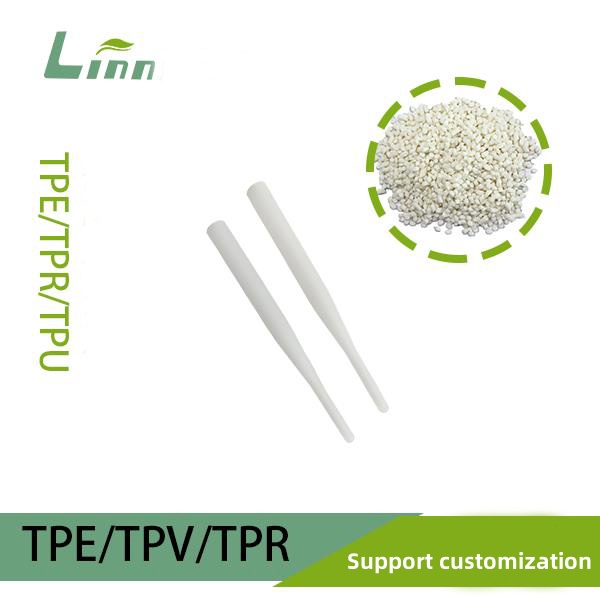As someone who has been deeply involved in the thermoplastic elastomer (TPE) industry for years, I’m often asked: How exactly is TPE raw material made? This question seems straightforward but involves complex chemical processes, material science, and production techniques. Today, I’ll take you behind the scenes of TPE production from an insider’s perspective, breaking down the process in a clear and practical way. Whether you’re curious about TPE manufacturing or looking to select the right material for your project, this article will provide you with valuable insights.

What is TPE? A Quick Overview
Before diving into the production process, let’s get to know TPE. Thermoplastic Elastomer (TPE) is a material that combines the elasticity of rubber with the processing ease of plastic. It’s soft, durable, and easy to mold, making it a go-to choice for applications like automotive parts, medical devices, and consumer products (think phone cases or shoe soles). What makes TPE special is its ability to soften and be reshaped when heated, then regain its elasticity when cooled, all while being recyclable and eco-friendly.
TPE comes in various types, such as SBS (styrene-butadiene-styrene block copolymer), SEBS (hydrogenated SBS), and TPU (thermoplastic polyurethane). Each type has unique formulations and production methods, but the core production logic is similar. In this article, I’ll focus on SEBS-based TPE as an example to walk you through the production process.
TPE Production Process: From Raw Materials to Finished Product
Producing TPE is a precise chemical process that involves multiple steps and specialized equipment. Below, I’ve outlined the full TPE production workflow in a way that’s easy to understand.

1. Raw Material Preparation: The “Ingredients” of TPE
TPE production is like cooking a dish—the quality and ratio of ingredients determine the final product. The main raw materials for TPE include:
Base Polymer: Such as SEBS or SBS, this is the core component that defines TPE’s elasticity and strength.
Plasticizing Oil: Typically paraffin oil or naphthenic oil, used to adjust TPE’s hardness and flexibility.
Fillers: Like calcium carbonate or talc, these reduce costs and enhance physical properties.
Additives: Including antioxidants, UV stabilizers, and color masterbatches, which improve durability and appearance.
Modifiers: Such as polypropylene (PP) or polyethylene (PE), which enhance processing performance.
The choice of raw materials is critical. For instance, the quality of SEBS affects TPE’s weather resistance and elasticity, while the purity of plasticizing oil impacts odor and environmental compliance. From my experience, I’ve seen manufacturers struggle with issues like strong odors or inconsistent performance due to poor raw material control. That’s why sourcing high-quality suppliers is the first step in production.

2. Formulation Design: The “Recipe” for TPE
Before production begins, engineers must design a formulation tailored to the customer’s needs. For example, automotive seals require high weather resistance, while baby products demand non-toxicity and low odor. Formulation design is like mixing a cocktail—every ingredient’s proportion must be precise.
Here’s a typical SEBS-based TPE formulation example:
| Component | Proportion (Parts by Weight) | Purpose |
|---|---|---|
| SEBS | 100 | Provides elasticity and structure |
| Paraffin Oil | 50-150 | Adjusts hardness and flexibility |
| Polypropylene (PP) | 20-50 | Enhances processing and strength |
| Calcium Carbonate | 0-50 | Reduces cost, improves rigidity |
| Antioxidant | 0.5-2 | Prevents aging |
| Color Masterbatch | 1-5 | Adds color |
Once the formulation is set, small-scale testing ensures it meets performance requirements. This step requires extensive experimentation and experience. I’ve spent countless hours in the lab tweaking formulations, sometimes adjusting dozens of times to achieve the desired outcome.

3. Compounding and Pelletizing: “Cooking” the TPE
With the formulation finalized, the raw materials are compounded and pelletized into TPE granules. This process relies on a twin-screw extruder, which acts like a high-powered blender to mix and melt the materials.
The steps are as follows:
Pre-Mixing: SEBS, paraffin oil, and other raw materials are blended in a high-speed mixer to ensure uniformity.
Melt Compounding: The mixed materials are fed into a twin-screw extruder, where they’re melted and blended at high temperatures (around 180-220°C) and shear forces. Screw speed and temperature control are critical—any deviation can lead to inconsistent material properties.
Extrusion and Pelletizing: The molten TPE is extruded through a die into strands, which are cooled (via water or air) and cut into uniform pellets.
Drying and Packaging: The pellets are dried, screened, and packaged as finished TPE raw material.
This process demands precise control of temperature, pressure, and timing. I recall a time when we were troubleshooting equipment because high screw speeds caused rough pellet surfaces, leading to customer complaints. After optimizing process parameters, we resolved the issue.

4. Quality Testing: TPE’s “Health Check”
Once TPE pellets are produced, they undergo rigorous quality testing to ensure they meet standards. Common tests include:
| Test Item | Test Method | Purpose |
|---|---|---|
| Hardness | Shore A Durometer | Verifies flexibility meets requirements |
| Tensile Strength | Universal Testing Machine | Evaluates strength and toughness |
| Weather Resistance | UV Aging Chamber | Tests UV and aging resistance |
| Odor | Odor Assessment (Human or Device) | Ensures low odor and environmental compliance |
| Environmental Compliance | RoHS, REACH Testing | Confirms absence of harmful substances |
These tests ensure compliance with customer needs and international standards, such as the EU’s RoHS Directive (RoHS Official Site) and REACH Regulations. I once worked at a factory that had to urgently switch plasticizing oil suppliers due to failing environmental tests—a challenging but necessary fix.

5. End-Use Applications: From Pellets to Products
Once produced, TPE pellets are sold to downstream manufacturers for injection molding, extrusion, or blow molding into various products, such as:
Automotive Industry: Seals, floor mats, interior components.
Medical Industry: IV tubing, medical gaskets.
Consumer Goods: Phone cases, grips, sports equipment.
As part of the production side, we often collaborate closely with customers to ensure TPE’s properties align with their equipment and product requirements. Some clients have very specific needs, like “hardness must be Shore A 50±2,” which requires extra precision in production.

Challenges and Solutions in TPE Production
While TPE production is well-established, real-world challenges persist. Here are some common issues and how I’ve seen them addressed:
High Raw Material Costs: SEBS and high-quality plasticizing oils are expensive. Optimize formulations with cost-effective fillers while maintaining performance.
Inconsistent Performance: Variations in hardness or tensile strength. Tighten control over compounding temperature and screw speed, or upgrade equipment if needed.
Strict Environmental Standards: Customers demand non-toxic, low-odor materials. Use REACH-compliant raw materials and conduct regular third-party testing.
Diverse Customer Needs: Different clients require unique TPE properties. Build a flexible formulation database to quickly meet varied demands.
I once worked on an order requiring TPE to be both heat-resistant and ultra-soft (Shore A 30). It took two weeks of formulation tweaks—adjusting paraffin oil ratios and SEBS grades—to deliver successfully. These challenges, though tough, have deepened my understanding of TPE production.

Environmental and Sustainability Aspects of TPE Production
Sustainability is a top priority in the chemical industry, and TPE production is no exception. Compared to traditional rubber, TPE’s recyclability makes it a favorite in green manufacturing. However, energy consumption and waste management remain concerns.
Here are some eco-friendly practices I’ve seen in action:
Eco-Friendly Raw Materials: Prioritize halogen-free, low-VOC plasticizing oils and additives.
Energy Optimization: Upgrade extruder designs to reduce energy use during compounding.
Waste Recycling: Reprocess production scraps into new pellets for reuse.
Green Certifications: Pursue ISO 14001 environmental management certification to boost credibility.
My factory invested heavily in environmental upgrades in recent years. While costly upfront, these efforts have ensured compliance with regulations and earned greater customer trust in the long run.

Final Thoughts: The Future of TPE
TPE is a “versatile material” with immense potential. From wearable devices to electric vehicles, its applications are everywhere. As an industry professional, I’m excited about its future. I hope this article has not only clarified how TPE is made but also highlighted its value and possibilities.
If you have questions about TPE or need advice on formulations for specific applications, feel free to reach out! Below, I’ve included some common questions for further clarity.
Related Q&A
Q1: What’s the difference between TPE and TPR?
A: TPE (thermoplastic elastomer) is a broad category that includes TPR (thermoplastic rubber). TPR typically refers to SBS- or SEBS-based TPE with a wide hardness range. In short, TPR is a subset of TPE, often used in applications like footwear.
Q2: Does TPE production harm the environment?
A: Compared to traditional rubber, TPE production is more eco-friendly due to its recyclability and lower waste. However, compounding can emit small amounts of VOCs, which require environmental controls. Using REACH-compliant raw materials is also essential.
Q3: Can TPE fully replace silicone?
A: TPE matches silicone in flexibility and processability at a lower cost but falls short in high-temperature resistance (>150°C) and chemical stability. The choice depends on the application—medical fields may prefer silicone.
Q4: How do I choose the right TPE raw material?
A: Define your product requirements (hardness, weather resistance, eco-friendliness), then work with suppliers to test samples. Partner with manufacturers offering technical support for consistent formulations.
Q5: What are the storage requirements for TPE pellets?
A: Store TPE pellets in a dry, cool environment, away from direct sunlight and high temperatures, to prevent moisture absorption or performance degradation.
